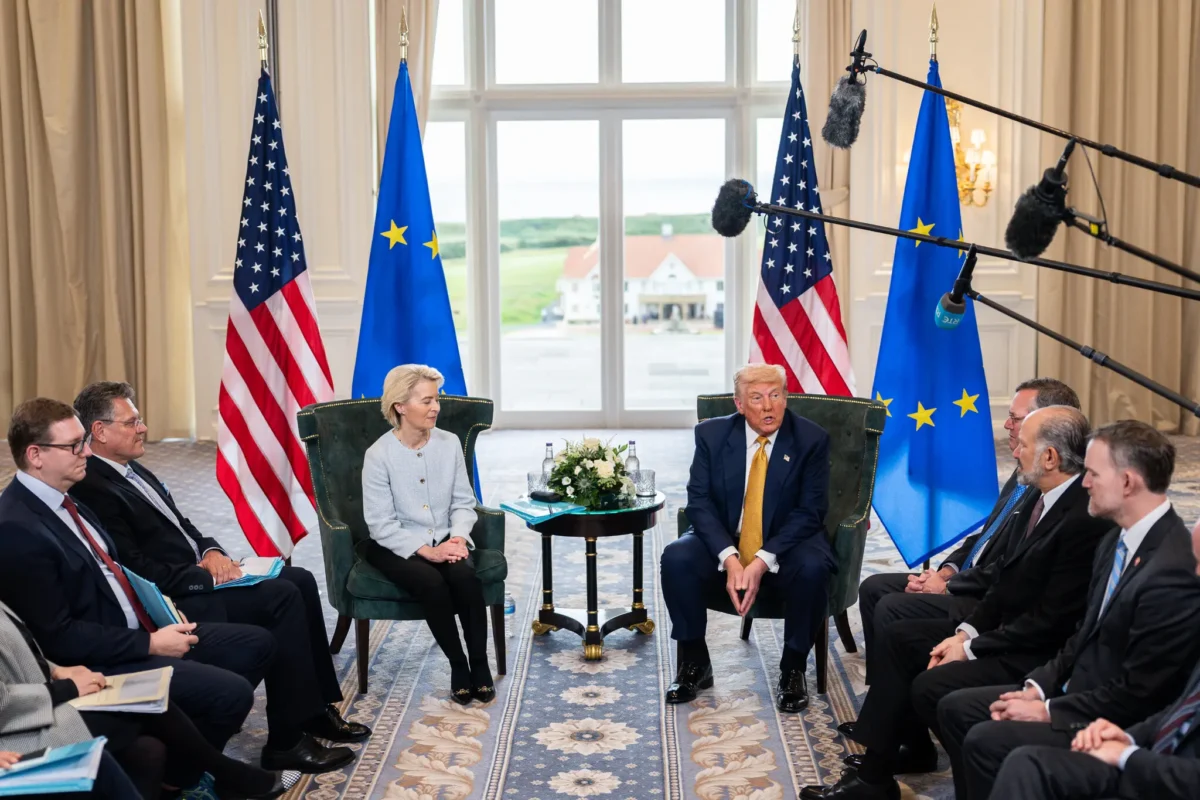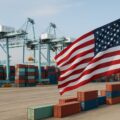
US-EU trade deal 2025: tariffs, energy, and military procurement reshape global markets
On July 27, 2025, in Scotland, US President Donald Trump and European Commission President Ursula von der Leyen met amid escalating tariff tensions between the US and EU. The parties reached an agreement that Trump himself called “the largest in US history.” Such steps have been rare, even during previous trade wars between major economies.
Key Points: Tariffs, Energy, and Military Procurement
The EU Buys US Energy and Invests in America
As a result of the talks, the European Union agreed to purchase $750 billion worth of US energy resources over several years.
Trump stated:
“The European Union will agree to buy $750 billion worth of energy from the United States… They will also agree to invest $600 billion more in the United States than they already do. So, they’re investing a lot of money. You know what amount that is. It’s very significant.”
These figures are confirmed by independent sources (Reuters). In addition, the EU has committed to investing $600 billion in the US, on top of existing investments. For the first time, such a massive transatlantic resource exchange includes oil, gas, LNG, and even nuclear fuel.
Open Markets-Partly, But Zero Tariffs for Strategic Sectors
Trump emphasized:
“The EU has agreed to open their countries for trade at zero tariffs.”
In reality, this means introducing a “zero-for-zero” regime (zero tariffs) for certain strategic sectors: aviation, semiconductors, pharmaceuticals, and basic raw materials. This marks a new approach to regulating strategic imports.
15% Tariff on European Imports to the US
The US agreed to lower the tariff on European goods to 15% (down from a threatened 30%).
Trump explained:
“We agreed that the direct tariff on cars and everything else will be a direct tariff of 15 percent.”
A 15% import tariff now covers most product categories previously at risk of double the duty. As Reuters notes, this compromise helped avoid a trade war and a sharp rise in prices for European cars and industrial goods in the US.
Military Cooperation: The EU Buys American Equipment
Trump stated:
“EU countries agreed to buy a huge amount of military equipment. We don’t know the exact amount, but that’s good news, because we produce the best military equipment in the world.”
Independent media confirm: the new framework deal includes a large package of contracts for arms purchases from the US, although no specific figures were disclosed. This fits Washington’s course of supporting its defense industry and restarting arms exports to Europe.
Post List
Market Reaction: Emotions, Indices, Expectations
Global financial markets responded immediately:
- European index futures rose by more than 1%, the S&P 500 by 0.5%, Nasdaq by 0.6% (Reuters).
- The euro strengthened against the dollar, pound, and yen.
- MSCI Asia-Pacific (excluding Japan) gained 0.32%.
- Hong Kong’s Hang Seng increased by 0.5%.
- The Australian dollar neared an eight-month high.
Bank of Singapore currency strategist Sim Moh Siong noted:
“Markets have already partially priced in the positive news, so further moves may be restrained.”
Analyst Mark Whelan (Lucerne Asset Management) emphasized:
“This deal is a positive signal of stability and a return to predictable trade policy.”
Compromise Over Escalation
This agreement was a response to Trump’s recent threats to impose 30% tariffs on all European goods. The sides avoided a crisis by settling on a less painful rate for both partners. European leaders admitted the compromise was “not ideal, but necessary,” since a 15% tariff is still twice the average of previous years.
A New Architecture of Transatlantic Trade
- The 15% tariff is a compromise that removed the threat of a major trade war.
- Massive EU purchases of US energy and investment in America represent a record transatlantic exchange.
- EU countries buying US arms is a strategic tool for both defense and political stability.
- Zero tariffs for strategic sectors for the first time in US–EU history at this level.
- Global markets reacted positively, though further developments will depend on the actual implementation of the deal.
“I think this is the biggest deal we’ve ever made. Thank you very much,” Trump summarized.
Term explanations:
- Tariff (import duty) a tax on goods brought into a country, designed to protect domestic markets and regulate trade.
- Zero-for-zero an agreement to eliminate all tariffs in certain sectors.
- Energy contract a long-term agreement for the purchase of gas, oil, LNG, or other energy resources.
- Indices S&P 500, Nasdaq, MSCI Asia-Pacific, Hang Seng key stock market indicators for global markets.















